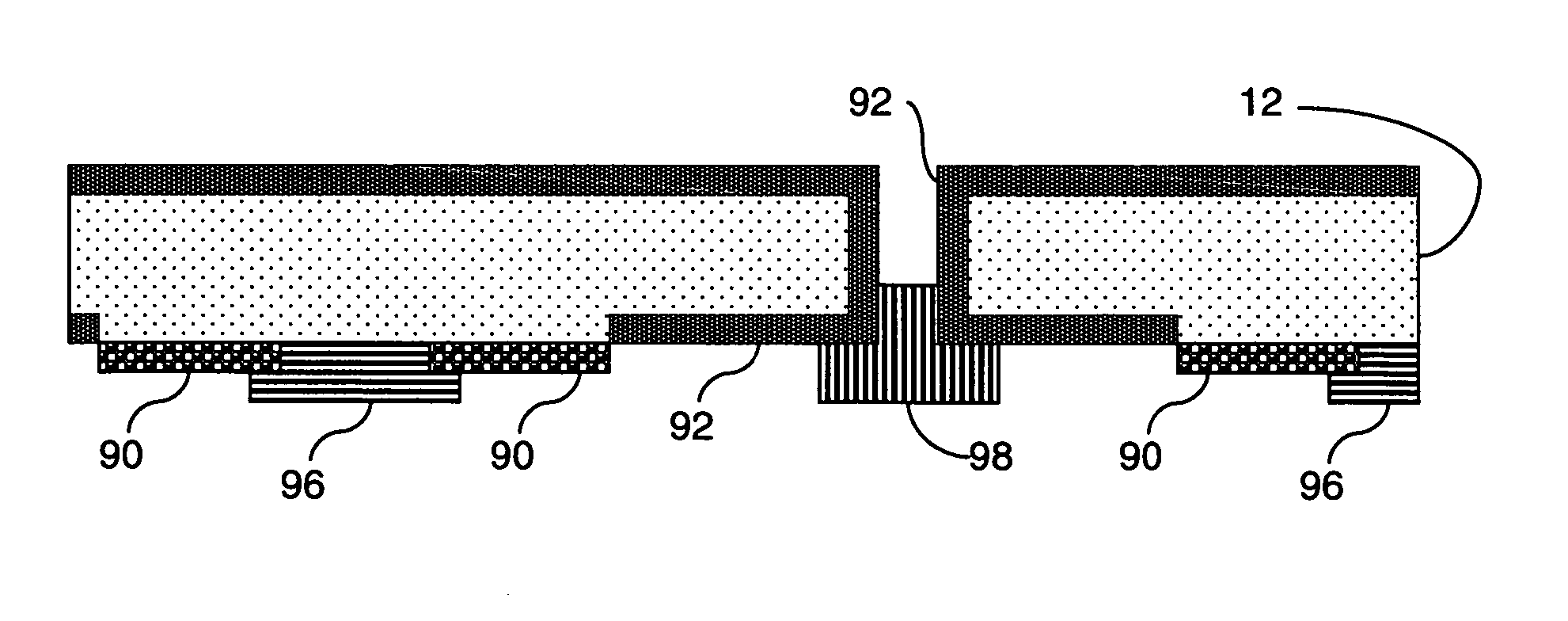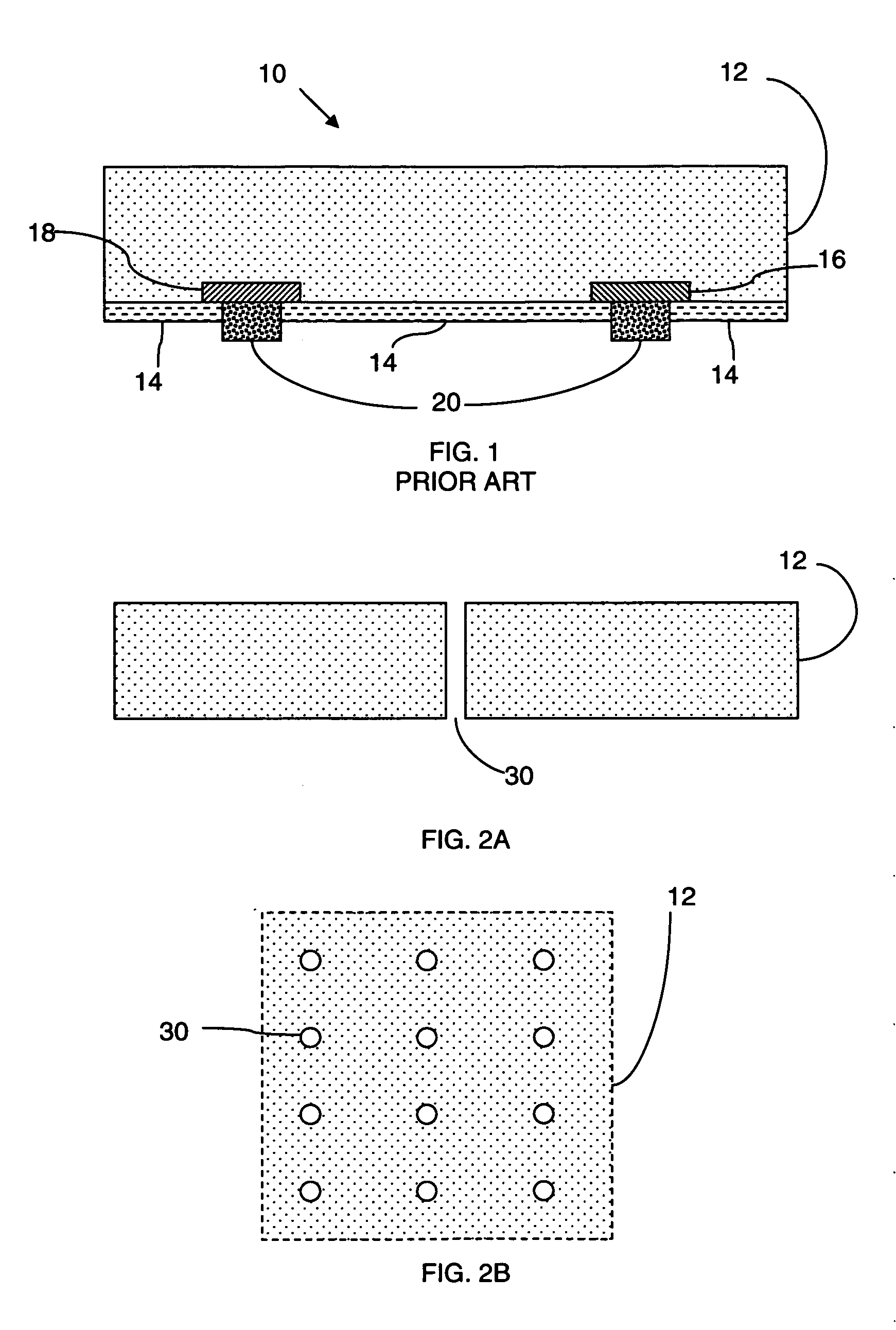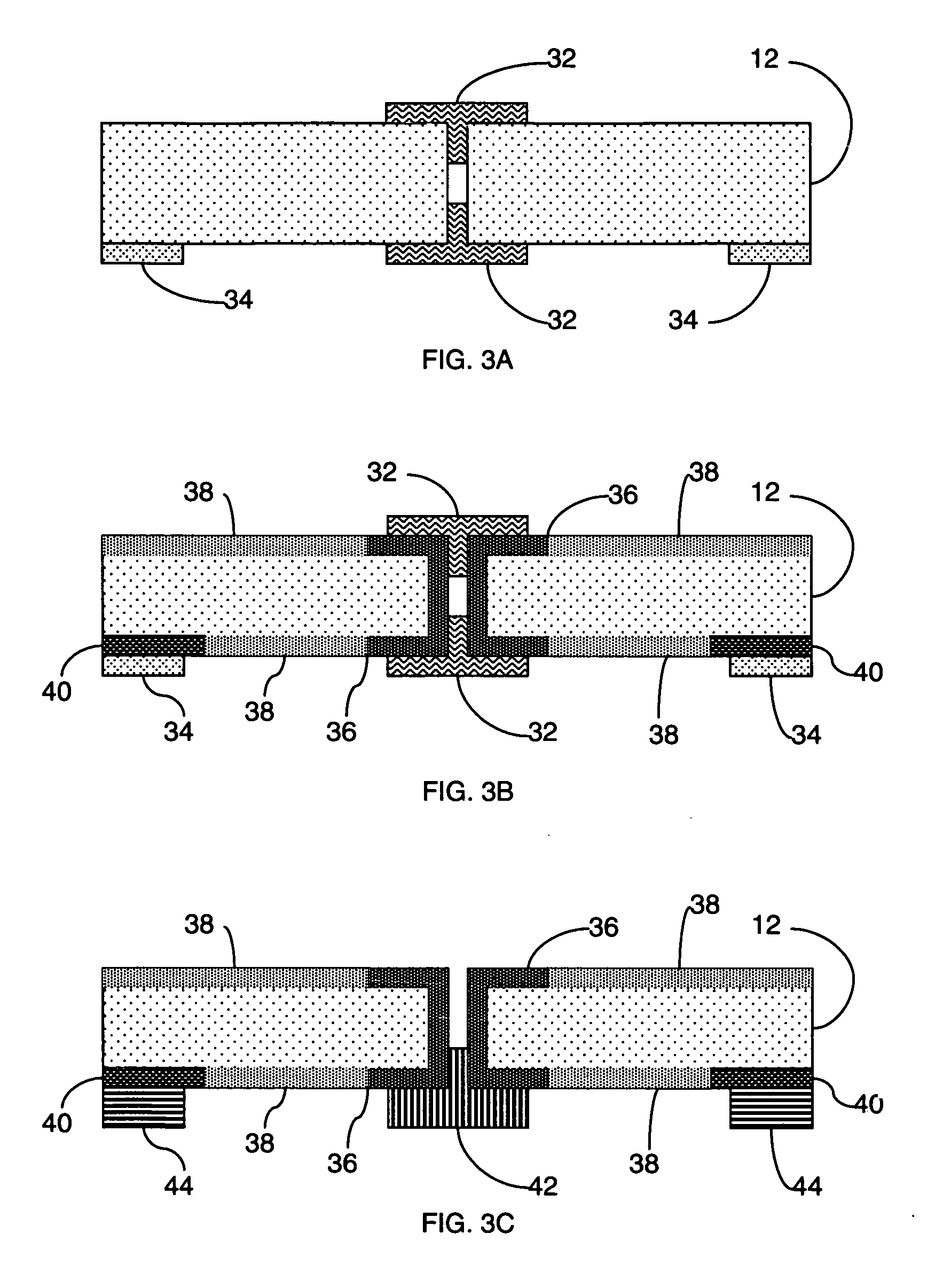Back-contact solar cells and methods for fabrication
a solar cell and back contact technology, applied in the field of back contact solar cell manufacturing methods, can solve the problems of low-cost process sequence, add complexity and cost, and increase the complexity of the manufacturing process, and achieve the effect of improving and simplifying the method of production and reducing costs
- Summary
- Abstract
- Description
- Claims
- Application Information
AI Technical Summary
Benefits of technology
Problems solved by technology
Method used
Image
Examples
Embodiment Construction
[0036] The invention disclosed herein provides for improved methods and processes for fabrication of back-contact solar cells, particularly methods and processes providing for simpler, more reliable and more economical fabrication. It is to be understood that while a number of different discrete methods are disclosed, one of skill in the art could combine or vary two or more methods, thereby providing an alternative additional method of fabrication. It is also to be understood that while the figures and example process sequences describe fabrication of back-contact EWT cells, certain of these process sequences can be used for fabrication of other back-contact cell structures such as MWT, MWA, or back-junction solar cells. In particular, the methods under the headings ““Use of Printed Diffusion Barriers and Dopant Diffusion Barriers” and “Use of Spin-On Glass Diffusion Barrier” and “Use of Spin-On Glasses as Diffusion Barrier and Dopant Sources” can be directly applied to any back-co...
PUM
 Login to View More
Login to View More Abstract
Description
Claims
Application Information
 Login to View More
Login to View More - R&D
- Intellectual Property
- Life Sciences
- Materials
- Tech Scout
- Unparalleled Data Quality
- Higher Quality Content
- 60% Fewer Hallucinations
Browse by: Latest US Patents, China's latest patents, Technical Efficacy Thesaurus, Application Domain, Technology Topic, Popular Technical Reports.
© 2025 PatSnap. All rights reserved.Legal|Privacy policy|Modern Slavery Act Transparency Statement|Sitemap|About US| Contact US: help@patsnap.com



